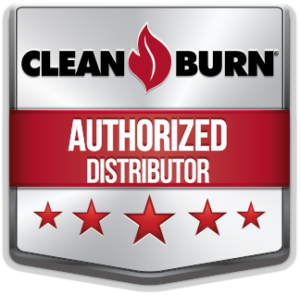How to Select the Right Clean Burn Furnace For You
Your Clean Burn Distributor is an expert in recommending the right Clean Burn used-oil furnace for your application. This recommendation includes a wide range of variables and, as you will see as you read further, can be complex.
* Note: The following formulas are meant to be used as a quick reference tool only and are not intended to replace a full heat loss calculation of the building.
To size the furnace, you need to figure out the cubic footage of the building and then multiply that figure by a correction factor. The following chart will give you these correction factors and an example of how to size a furnace.
CORRECTION FACTORS
This figure is used to know the minimum BTU/hr’s required per cubic feet of building space based on the average outside coldest day temperature – not the coldest day of the year.
| Average Temperature On Coldest Day |
|
| +40 | degrees F |
| +30 | degrees F |
| +20 | degrees F |
| +10 | degrees F |
| 0 | degrees F |
| -10 | degrees F |
| -20 | degrees F |
This figure is used to adjust for the insulation material in the building, and should be used in any building when sizing for the appliance.
| Minimum BTU/hr’s Required per Cubic Foot |
| 2.0 |
| 2.5 |
| 3.0 |
| 4.0 |
| 4.5 |
| 5.0 |
TO CALCULATE THE VOLUME OF THE ENTIRE AREA TO BE HEATED:
Take the inside length of the building…
For a building that you know has adequate insulation – No adjustment needed
For a building that has minimum insulation – Multiply BTU Requirements x 0.81
For a building that has no insulation – Multiply BTU Requirements x 1.15
For a building in severe conditions only – Multiply BTU Requirements x 1.61
| EXAMPLE: |
| Your building is 100 feet long |
| x 30 feet deep (wide) |
| x 14 foot high ceiling |
| = 42,000 cubic feet |
| x 3.5 (+10 degrees F, the average coldest outside temperature) |
| = 147,000 minimum BTU/hr’s required |
| x 1.25 (the building has no insulation) |
| = 183,750 corrected BTU/hr’s required |
LISTED BTU/hr INPUT OF CLEAN BURN FURNACES
| Furnace | Approx. BTU/hr Input | |
| CB-1750 | 175,000 | |
| CB-2500 | 250,000 | |
| CB-3500 | 350,000 | |
| CB-5000 | 500,000 | |
| * Note: All furnaces must be sized by their BTU/hr’s output ratings and not their BTU/hr’s input ratings. If you size them by their listed inputs, you will be undersized and it will not heat the building properly. | ||
OTHER FACTORS TO CONSIDER WHEN SIZING A BUILDING
Air Infiltration: Check for gaps around the doors and windows of the building. A 1″ gap around a 12′ x 12′ door is equal to a 1′ x 3′ hole in the sidewall of the building. No heating appliance will be able to adequately heat a “drafty” building.
Building Configuration: A long, narrow building, will be more difficult to heat than a short, more squared building. Example: A 40′ x 50′ building has 180 linear feet of exterior wall surface, while a building 20′ x 100′ has 240 linear feet of exterior wall surface.
Ceiling Height: If the ceiling is more than 14′ high, you must install ceiling fans to re-circulate the heat from the ceiling down onto the floor area. Install one, 3-bladed, 56″ industrial ceiling fan every 2,000 square feet of inside building space.
Insulation: A building with no insulation will have a very large heat loss and will be very difficult to heat during the winter months. Also, a building that leaves the garage doors open or one that opens and closes their doors a lot, will require added heat. Make sure that you use the correct correction factor when sizing the equipment in these kinds of situations.
Heat Recovery: A larger heating appliance than is normally required may be necessary to install in a building where the garage doors are left open a lot or opened and closed frequently.
Amount of used-oil available: The heating appliance should never be sized by this requirement. It should always by sized by the heat loss of the building. However, if you size the heating appliance based on the amount of used-oil you generate, the heating appliance will not be sized to properly heat the building. It will only be able to supply a portion of the total heat load, and other heat will need to be installed in order to properly heat the building.
IMPORTANT: Do not remove the old heating appliance from the building if it is in proper working order. The old unit can provide auxiliary heat on extremely cold days, and can provide back-up heat should the Clean-Burn unit require service or maintenance.


